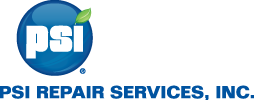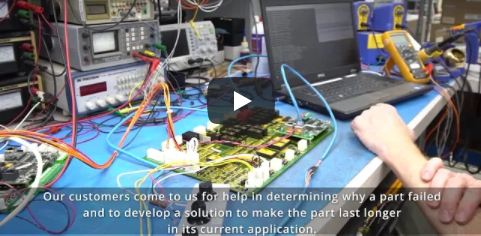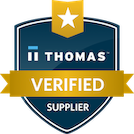Written by The PSI Repair Team
Servo valves are one of the most difficult components to repair due to a very small amount of contamination can cause them to fail. PSI Repair Services, Inc. has a high quality reputation on these repairs. Our service benefits include: A Cleaning lab to calibrate and test to meet OEM specifications. Genuine manufacturer’s parts used in repairs. Testing to the OEM specifications. A dedicated servo valve pressure and flow test stand. Customer Issue: Contamination commonly results in plugged orifices. PSI Solution: We offer a Clean & Calibration(C&C) service consisting of testing, ultrasonic flush, replacement of filters and base “o” rings. Testing includes the main stage and conduct a final test of the repaired valve. This provides our customers with a low cost repair solution that returns servo valves in like-new condition at a fraction of the cost of new. If the repair requires additional parts we can handle that also.…
Written by The PSI Repair Team
Customers choose us for PCB repairs because: PSI replaces stressed and degraded parts, as well as those that have failed. Benefit: Longer Mean Time Between Failures. PSI finds the root cause of failure on your existing equipment. Benefit: Improved reliability and efficiency through corrective engineering. PSI offers emergency service, often within 24-48 hours, when a customer faces production loss. Benefit: Greater uptime and bottom line profitability. PSI solves end-of-life and obsolescence issues. Benefit: Reduced expense by avoiding expensive retro-fit projects. PSI stocks spare parts as an exchange service. Benefit: Immediate solution. Want to learn more? Check our overview of industrial PCB repair services and download our Electronics Repair Line Sheet!
Written by The PSI Repair Team
The Application: Pitch Drive Amplifier in GE 1.5 ESS Wind Turbines Editor’s Note: This Blog is Part One in a Five-Part Series about the Most Failure-Prone Electrical Systems in Wind Turbines That PSI Repair Most Frequently Services If you read our recent article about electrical failures in wind turbines published in North American Clean Energy, you’ll know that electrical system failures are responsible for 50% of all Wind Turbine (WT) downtime according to Reliawind report data. What’s surprising is that the system reported to have the single highest failure rate isn’t the power converter – and, even more surprising, it isn’t even technically considered an “electrical” system by their classification and therefore isn’t included in that 50% mark (making that figure an underestimation). The Pitch System – which is located in the turbine hub and is designed to regulate rotor blade angles in order to maximize wind power production –…
Written by The PSI Repair Team
It’s hard to overstate the importance of Wind Turbine performance on the future of the Wind Energy industry and, in many respects, the future of power generation and clean energy in the United States. If the Department of Energy is right, wind farms will generate 20% of U.S. electricity by 2030 and 35% by 2050 (up from just 5% today). This shift would spell massive change around the world, starting with American shoreline views and extending to the stability of OPEC economies. But there’s one key variable that will define whether the 35%-by-2015 scenario becomes reality or remains a pipedream. Everything hinges on Wind Turbine (WT) Reliability, a measurement of the availability, performance, and output of turbines. Recent research puts WT O&M costs between $9.8 to $21 per megawatt-hour, with the average GE 1.5 MW turbine producing about 3,285,000 kWh (or 3,285 mWh) of wind power output annually. This is consistent with…
Written by The PSI Repair Team
Faulty Wind Turbine Electronics Systems are Mostly to Blame The potential: 35% by 2050 Alternative energy skeptics are keen to point out wind energy only made up 5% of total electricity generation in the United States in 2015; a mere “drop in the bucket.” While it’s true the power generated by wind energy and other sustainable sources is dwarfed by that of fossil fuels, it’s also a mistake to overlook the boom the wind energy industry has experienced in the past decade. Demand for sustainable wind energy in the U.S. has grown an average of 22% per year since 2007. 50,000 wind turbines currently generate 75,000 MW of energy across the country, powering over 20 million American homes per year. Consider that a very large “drop in the bucket”. Granted, this industry is young compared to coal, natural gas, and nuclear but large-scale investment in wind energy didn’t begin in earnest…
Written by The PSI Repair Team
Source Newer-Generation Parts to Restore or Upgrade Your Legacy Equipment’s Functionality If the only constant in life is change, you might say the only constant in industry is obsolescence. Effectively managing legacy equipment obsolescence—alternatively put, planning for planned obsolescence—is one of the key underlying challenges facing industrial companies today. When any industrial part (be it electronic, hydraulic, robotic, or mechanical assembly) or legacy system becomes “obsolete,” the costs associated with its technological inferiority, component failures, and ultimately downtime are compounded by the uncertainty about what to do next and how to right the ship. For starters—don’t take the bait that your best and only option to restore uptime and get a leg up on your competition is to purchase a brand new part or system from the OEM. Whether “obsolete” means that: a) an out-of-production part or system begins wearing out or becomes inoperable; b) the technology has become antiquated…
Written by The PSI Repair Team
Who Should You Call When Your Wind Turbine Production Equipment Fails? The clock starts ticking the moment a wind turbine stops working. Wind turbine efficiency is evaluated in terms of minutes (of production up/downtime) and dollars (spent on after-sales services as a result of system failure). As far as the bottom line is concerned, individual equipment failures and their root causes are moot points. To maximize efficiency, the ideal wind farm would have in-house resources and know-how to conduct all necessary tests and repairs to restore turbines to full working order. To supplement these capabilities, the wind farm manager works hand-in-hand with OEMs of their turbine equipment to ensure fast turnaround and affordable replacement parts. Economic realities make this scenario totally unrealistic for most wind farms. The manpower and financial resources associated with running a wind farm and operations and maintenance (O&M) team are cost-prohibitive. Regarding OEMs, it’s important to…
Written by The PSI Repair Team
-- And Why We’re Better Than The Next Circuit Board Repair Shop No matter what brand or board type you’re working with, it’s impossible to escape the reality that PCBs are inherently failure-prone. Planning for when, rather than if, your circuit boards will malfunction is an approach that reduces costs and relieves future headaches. Shipping out your faulty PCBA for service can be stressful when you’re on a tight production schedule and board failure has already led to downtime, but it pays to have practiced technicians discover the root cause of a circuit board’s failure and analyze the extent of its damage. In addition to physical damage to the circuit card, like cracks and corrosion, discrete and power components can deteriorate for a wide range reasons, including extreme heat, over/under voltage surges and sags, and age; contaminants like grime and dust are also frequent sources of trace damage. Contacting a…
Written by The PSI Repair Team
Seismic vibrator trucks (aka “thumper trucks”) send shockwaves deep into the earth’s subsurface to locate untapped hydrocarbon reserves for the Oil & Gas industry. These shock/soundwaves reflect back to the surface, where they are picked up and recorded by geophones. This seismic data is later imaged with advanced software (think: ultrasounds) and analyzed by geologists who advise oil companies on where to drill for oil reserves. Not surprisingly, high-quality seismic data is mission-critical. Geophysical surveys can cost $50,000 or more per-square-mile depending on the territory, and multi-million dollar projects—sometimes billion dollar projects—are ultimately on the line. In short, there’s no tolerance or margin for error in this industry. Thumper trucks are intricate machines, however, powered by complex hydraulic and mechanical systems. To generate the massive force necessary for a controlled and effective sound blast (for perspective, dynamite used to be the preferred method for this), all equipment must be highly…
Written by The PSI Repair Team
Does your shop rely on AC/DC servo motor technology to keep production moving? If so, you know that a poorly performing servo motor can bring production to a halt, resulting in costly downtime. PSI Repair Services has specialized in servo motor repairs and testing for over 40 years. As an authority on understanding servo motor performance, PSI knows there are four golden rules to successful servo motor repairs. They are: 1. High voltage surge testing 2. Stressing the motor windings to check for breakdown under high voltage3. Proper alignment of the feedback to the motor poles4. Complete system closed-loop testing PSI analyzes and evaluates motors for vibration, temperature fluctuations, bore run-out and, of course, electronic integrity. Drives are repaired to OEM specifications and are load tested to check for proper voltage and current characteristics. To complete the repair cycle, PSI’s trained technicians perform bench tests, as well as extensive system/closed-loop…
Written by The PSI Repair Team
The most important part of a hydraulic system is keeping it clean. Any extreme pressure system is vulnerable to dirt, particles and other matter that contaminate the close tolerances necessary for any hydraulic system. All pipes, fittings, and other components must be extremely clean before use. When connecting to a hydraulic system, use the tubing or pipe that is capable of handling heavy pressures and loads required by the hydraulic system. Pipes should have a minimum number of bends and fittings, as well as securely fastened and clean. Iron pipes are not recommended because they have particles that will flake off and contaminate a system. Hydraulic Piston Pumps When it comes to hydraulic units, you will find that piston pumps, while more expensive than gear and vane pumps, provide longer life operating at higher pressure, with difficult fluids and longer continuous duty cycles. There are several advantages to using a…
Written by The PSI Repair Team
As an independent service provider (ISP) to the wind energy industry that recently surpassed 10,000 wind turbine component repairs, PSI Repair Services has earned the confidence of some of the largest wind farms in the United States. So, when we were recently approached with the question, “What advice would you give to wind farm owners when it comes to selecting an ISP?,” two points came to mind: First, PSI recommends an ISP that works closely with wind farm operations and maintenance (O&M) staff to uncover repair and reliability solutions. Second, PSI recommends an ISP with the right tools and talent in place to solve your problems and reduce operating costs. At PSI, we understand that wind turbine component failures typically involve multiple factors. That’s why we work closely with O&M staff to learn about nagging performance issues. Our experienced engineers have a track record of putting an end to nagging…
Written by The PSI Repair Team
For nearly 40 years, PSI Repair Services has seen a fair share of broken vacuum pumps come through the doors. Yet, even to this day, we still hear from plant managers and operations personnel that didn’t realize they could save money by repairing their broken vacuum pump. They’re even more surprised when they learn that they could save as much as 70% versus the cost of buying a new, replacement unit. And it doesn’t matter if it is a Beach-Russ, Dayton, Gardner Denver, Mitsubishi, Siemens, Stokes, Ulvac or Whitlock. PSI has repaired them all. We thoroughly check and evaluate the gaskets, seals, bearings, valves, temperature probes, belts, couplings, pulleys, and electrical motors on every broken vacuum pump we receive. If there are any unsalvageable and/or obsolete components, PSI’s Engineering Department offers comprehensive rebuild/remanufacturing services. In many cases, PSI’s engineers can enhance the performance of a faulty OEM component with superior,…
Written by The PSI Repair Team
In recent years, PSI Repair Services has seen a noticeable increase in repair projects from the transit industry. A large number of these repairs involve older technology and specialty parts that the OEM no longer manufactures, sells or repairs. In many instances, these aged parts are causing premature and catastrophic failures. And, due to funding constraints and long lead times for new train deliveries, many transit agencies have opted to continue operating these older trains, which can double the planned life of the original equipment. The good news is that PSI offers the transit industry a wide range of services, including repair, modification, failure analysis, corrective action and remanufacturing. Our reverse-engineering expertise allows us to successfully repair and/or remanufacture obsolete parts. PSI can also modify end-of-life parts with current, commercial-off-the-shelf (COTS) parts that operate more efficiently, run cooler and have increased uptime. Cost-saving services like these have saved our customers…
Written by The PSI Repair Team
When it comes to high-precision positioning for rotary-to-linear motion, the ball screw provides unequaled reliability and performance. These highly efficient components are commonly found on machine tools (CNC axis machines, Broaching machines, Milling machines, Hobbing machines, Grinding machines, Lathes, etc.), robots and precision assembly equipment (like a Semiconductor wafer transport system). They are also frequently found on aircraft and missiles. Why do ball screws fail? Ball screws fail for a variety of reasons, such as accidents resulting from electronic malfunctions, poor design (under capacity), too high preload, misalignment, environmental, operator error, poor maintenance and normal wear and tear over time. Ball screw failure warning signs If your ball screw shows signs of pitting or corrosion from contaminants, it is deteriorating. If it shows signs of heat discoloration and operates roughly (wobbles, chatters, growls, etc.), it is likely inadequately lubricated, misaligned and/or has worn/damaged bearings. If the ball screw suffers…








